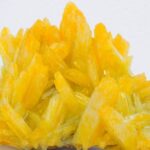We explain what carbon is, characteristics, properties and uses. Also, information about carbon, chemical compounds it can form, isotopes.
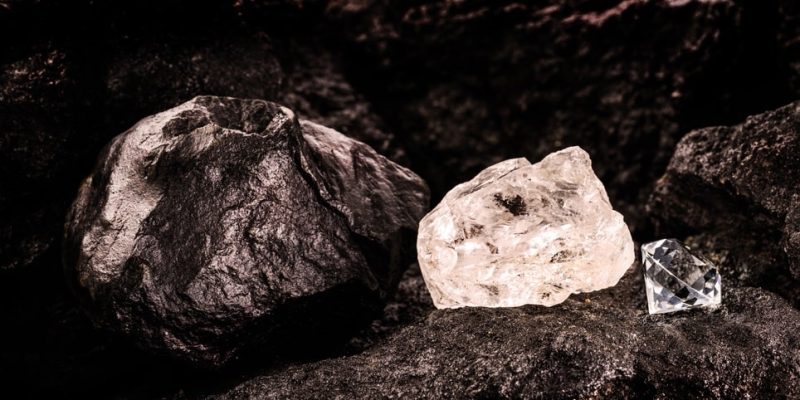
What is carbon?
Carbon is a chemical element of the Periodic Table that is represented by the symbol C. It is the main component in the structure of organic compounds which are essential to form the molecules that make up living beings.
Its atomic number is 6 and its atomic mass is 12.01 amu. It is a non-metallic chemical element that forms both organic (compounds that have their main structure based on carbon) and inorganic (compounds that contain carbon, but whose main structure is not based on carbon) chemical compounds.
On the other hand, carbon atoms can bond in different ways to form different allotropes. Carbon allotropes are the different simple substances that this chemical element can form depending on how its atoms are linked. For example: diamond and graphite are allotropes of carbon.
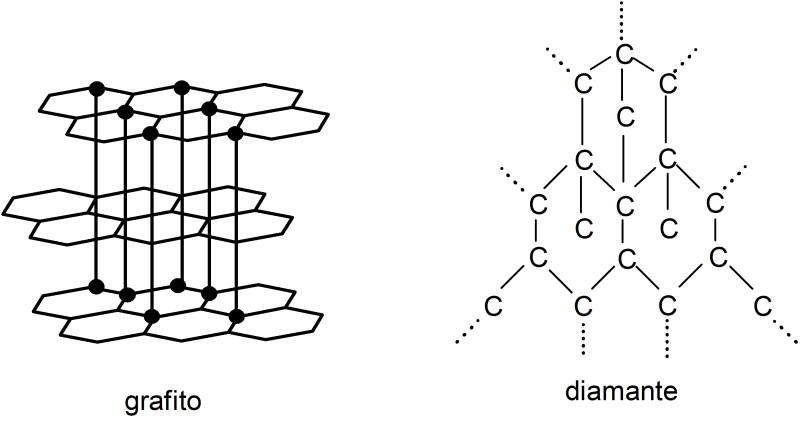
See also: Carbon cycle
Carbon properties

Carbon can be part of organic and inorganic chemical compounds. Furthermore, it can have different aspects and properties that vary depending on the allotrope that forms this element.
Physical properties of carbon
The physical properties shared by all carbon allotropes are:
- They are solid at 20 °C and 1 atm.
- They are not soluble in water.
However, there are properties that vary depending on which allotrope of carbon it is, whether diamond or graphite, which are its best-known allotropes. Thus, we can affirm that:
When it forms graphite:
- it's soft
- it is black
- conducts electricity
- It has a melting point of 3527 °C
When it forms a diamond:
- it's very hard
- It is transparent in appearance
- does not conduct electricity
- has a high capacity to conduct heat
- It has a melting point of 3823070 °C
Chemical properties of carbon
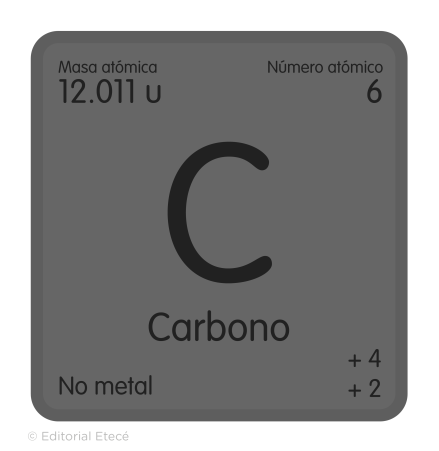

The chemical properties of carbon are:
- It mainly has oxidation state +4.
- Reacts with oxygen to form carbon monoxide (CO), carbon dioxide (CO2) and tricarbon dioxide (C3EITHER2).
- It experiences different chemical reactions that depend on the organic compound that is forming this chemical element. For example:
The combustion of alkanes.

The reaction of alkanes with chlorine (Cl2) and bromine (Br2).

The reaction of alkenes with hydrochloric acid (HCl).

What is carbon for?
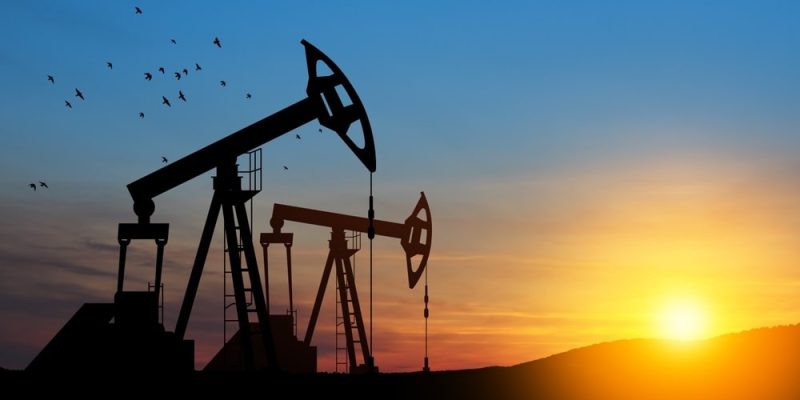
Carbon forms the main part of fossil fuels, such as oil and natural gas. This is why it is used as fuel (gasoline, diesel) to generate electrical energy and to operate vehicles, such as cars, trains and airplanes.
In addition, it has multiple uses such as:
- It is used as a raw material in the production of plastics.
- It is used in the manufacture of steel.
- It is used in jewelry, as the diamond is considered a precious stone of great value.
- It is used to filter and purify water, since it is part of activated carbon, which is a material widely used in filtration systems.
- It is used to produce pills that in medicine serve to absorb toxins from the digestive system.
- The isotope carbon-14 (14C) it is used to find out the age of rocks and fossils.
- It is used to make pencils, since graphite mixed with clay is the material for pencil tips.
Carbon-based compounds
Organic compounds
Organic compounds are chemical compounds that have their main structure formed by carbon-carbon and carbon-hydrogen bonds. Additionally, they may contain oxygen (O), sulfur (S), phosphorus (P) and nitrogen (N). For example:

Inorganic compounds
Inorganic compounds are chemical compounds that are made up of different chemical elements, and do not necessarily contain carbon.
Their main structure is not made up of carbon, they may contain carbon atoms as part of their structure. For example:

Carbon allotropes

The allotropes are the different simple substances (substances made up of a single chemical element) that can form a chemical element. In the case of carbon, its allotropes are the different simple substances that this element can form, depending on how its atoms are linked. Thus, each allotrope has a different molecular structure.
Each allotrope of the same element can vary in some properties, such as its hardness, color, odor, melting point (temperature at which a solid transforms into a liquid), boiling point (temperature at which the pressure of a liquid is reduced). equals the vapor pressure of this liquid, then it transforms into vapor), among others.
The main allotropes of carbon are:
- The diamond It has a face-centered cubic crystal structure. It is very hard, does not conduct electricity and conducts heat very well. It has been given great commercial value. It is used in various types of industries to cut, drill and polish parts. In addition, it is used in jewelry: diamond jewelry is some of the most expensive in the world.
- The graphite It has a polymorphic structure and is made up of carbon sheets called “graphene”. It is relatively soft and conducts electricity. It is used in the mechanism of some lamps, as a dry lubricant, as a moderator in nuclear reactors and to make pencils.
- The fullerenes They have a spherical structure composed of hexagons. They are insoluble in many solvents. They have been used in medicine to attack bacteria and cancer cells.
- Graphene It has a regular and hexagonal flat structure. It is very resistant, flexible and light. It is used to make bulletproof armor and for protection against ionizing radiation.
- Carbon nanotubes They have a hollow cylinder-shaped structure that can be seen as rolled graphene sheets. When nanotubes are simple, they are very rigid and strong. They are used in electronics, optics and nanotechnology.
- The Lonsdaleite It has a hexagonal structure with a shape similar to a diamond, although it is polymorphic. It is shiny black. It was found in meteorites.
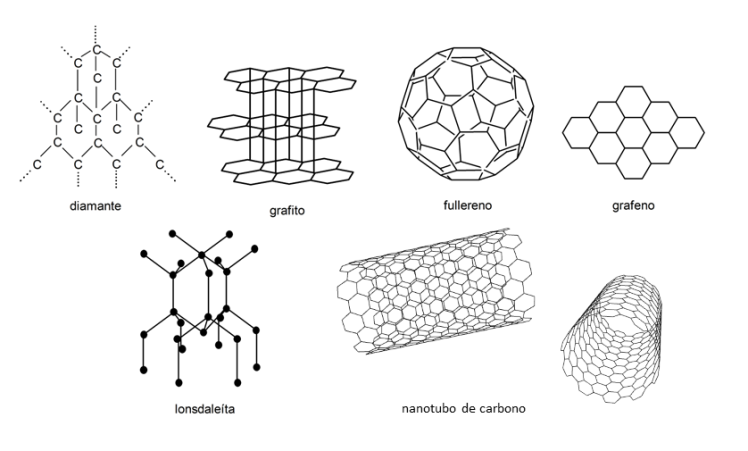
Carbon isotopes
Isotopes are atoms of the same chemical element that have the same number of protons in their nucleus, but a different number of neutrons.
The main isotopes of carbon are:
- Carbon-12 (12C) It is made up of 6 protons, 6 neutrons and 6 electrons. It is the isotope of carbon that exists in the greatest quantity on Earth. It is used as a standard for calculating atomic masses.
- Carbon-13 (13C) It is made up of 6 protons, 7 neutrons and 6 electrons. It is used to evaluate the quality of soils.
- Carbon-14 (14C) It is made up of 6 protons, 8 neutrons and 6 electrons. It is used in archeology to find out the age of fossils.
carbon cycle

The carbon cycle It is the process of carbon circulation on planet Earth. During this cycle, carbon moves between different ecosystems and the environment that surrounds them, and can form part of different chemical compounds that can exist in different states of aggregation (solid, liquid, gas).
The carbon cycle is made up of different stages:
Rapid or biological stage
The rapid stage is the one in which the biological processes of living organisms intervene. It is made up of processes such as:
- Carbon fixation by plants Plants capture carbon dioxide (CO2) when they carry out photosynthesis, in this way they fix carbon.
- Release of carbon into the atmosphere When the respiration of living beings and the decomposition of organic matter occurs, carbon dioxide is released into the atmosphere.
Slow or geological stage
The slow stage is that formed by chemical and physical processes that lead to the exchange of carbon between the different layers of the Earth. It is made up of processes such as:
- Carbon mineralization and sedimentation Carbon accumulates and settles, and can form fossils and fossil fuels.
- Carbon release due to metamorphism Carbon is present in some rocks, which when they move, release it. In addition, carbon is released when volcanoes erupt.
- Release of carbon dioxide (CO2) and methane (CH4) in human activities Carbon is released into the atmosphere as part of CO2 and the CH4 that is emitted in mining and industrial activities carried out by humans.
References
- Jaramillo, VJ (2004). The global carbon cycle. Climate change: a view from Mexico, 77(1), 77-85.
- CARNE, E. (2014). organic chemistry.
- McMurry, J., Mondragón, CH, & Pozo, VG (2008). Organic chemistry (pp. 560-574). Mexico: Cengage learning.
- Chang, R. (2011). Chemistry fundamentals. Mexico-McGraw-Hill.

